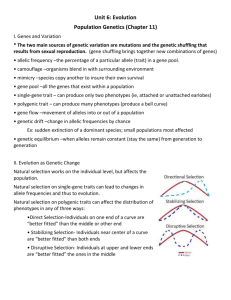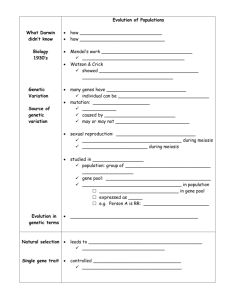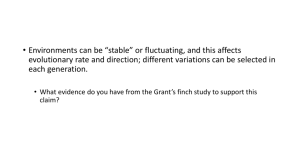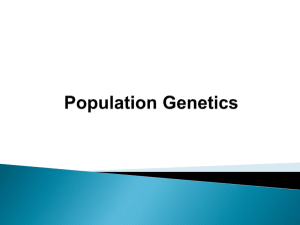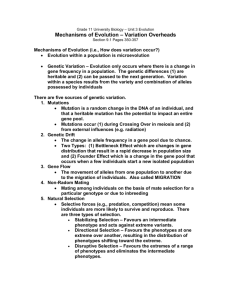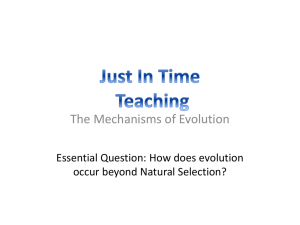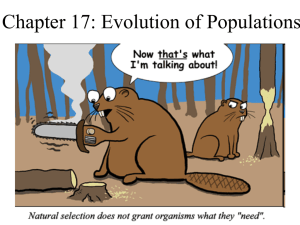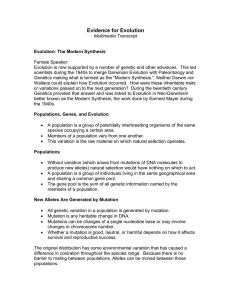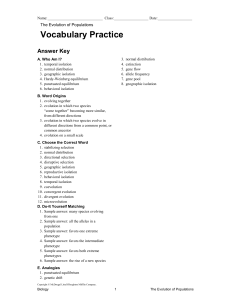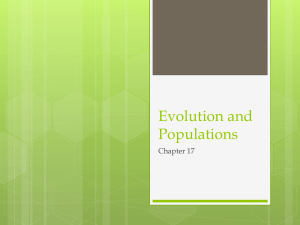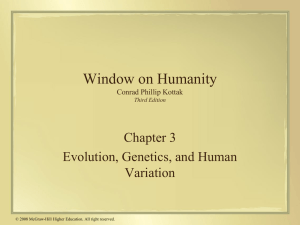Evolution of Populations
advertisement
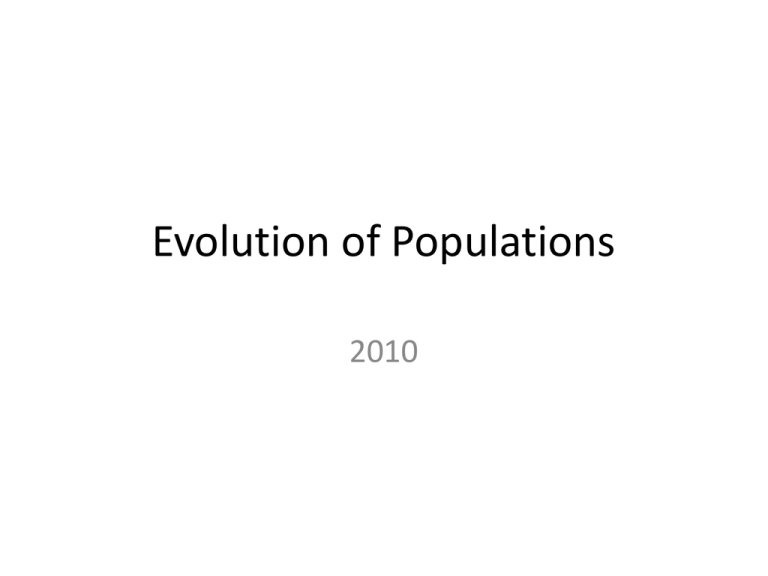
Evolution of Populations 2010 The Modern Synthesis • Population genetics integrates Darwinian evolution and Mendelian Genetics • Important terms in population genetics: Population: group of individuals of same species Species: groups of populations that are capable of interbreeding and producing fertile offspring in nature Gene pool: total aggregate of genes in a population Hardy – Weinberg Theorem • Gene pool of non-evolving population •States that the frequency of alleles and genotypes in a population’s gene pool remain constant unless acted upon by agents other than Mendelian segregation and recombination of alleles. p+q = 1 Hardy Weinberg Equilibrium: p2 + 2pq + q2 =1 P2 = Frequency of RR phenotype 2pq -= Frequency of Rr phenotype q2= Frequency of rr phenotype Conditions that must be met: 1. 2. 3. 4. 5. Very large population size. No migration No net mutations Random mating No natural selection Do you that any natural populations are in HardyWeinberg equilibrium? Microevolution • Generation to generation change in the population’s frequency of alleles • 2 main causes: genetic drift – change due to chance, small populations & natural selection • Other causes - Bottleneck Effect • Drastically reduced population sizes • Small population size may not be representative of original gene pool • Reduction in genetic variablility The Founder Effect Occurs when a few individuals colonize an isolated habitat from a larger population Gene Flow • Genetic exchange through migration – gain or loss of alleles Mutation Substitutes one allele for another Selection Types Sexual Selection Speciation – Biological Species Concept • Prezygotic Barriers: habitat isolation, behavioral isolation, temporal isolation, mechanical isolation, gametic isolation • Postzygotic Barriers: reduced hybrid viability, reduced hybrid fertility, hybrid breakdown Types of Speciation • Allopatric: geographic barriers, disruption of gene flow • Sympatric: genetic causes – polyploid (plants), other genetic factors Tempo of Evolution • Darwin – gradual continual rate • Punctuated equilibrium model: spurts of rapid change followed by periods of relatively little change (Ex. Species exists for 5 million years but most morphological changes in 50,000 yrs – just 1%). Phylogenies • Many lines of evidence compiled • Biogeographical, fossil, morphological similarities (homologous not analogous structures), genetic evidence Categories of Evolution • Convergent evolution - acquisition of the same biological trait in unrelated lineages. • Leads to analogous structures Parallel evolution is the development of a similar trait in related, but distinct, species descending from the same ancestor, but from different clades Divergent evolution - accumulation of differences between groups which can lead to the formation of new species, usually a result of diffusion of the same species adapting to different environments Major Lineages of Life 3 domains: Bacteria, Eukaryota, Arachae

